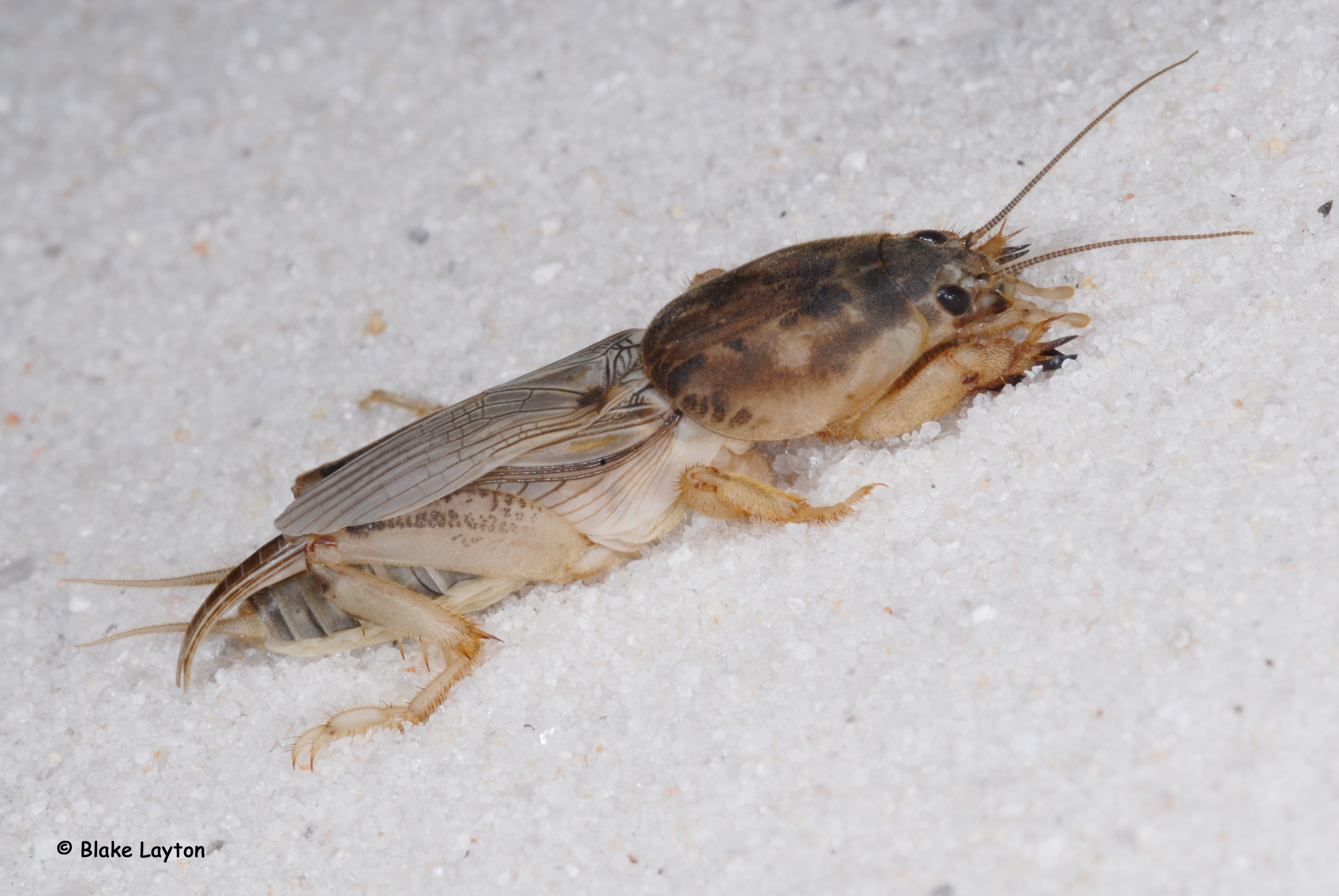Southern Mole Cricket | Vol 3, No. 16

Scapteriscus borellii
Order: Orthoptera
Family: Gryllotalpidae
Some folks say mole crickets look like they were designed by a committee. If so, this committee functioned much better than most, because mole crickets are extremely well-designed for the life they live. They are also aptly named. Like their namesake, their enlarged, heavy-clawed front legs are well-suited for digging through soil, and the tunnels they leave along the surface of the soil look like miniature mole tunnels. Even their family name echoes that of their mammalian namesake; moles are in the family Talpidae. Although mole crickets do feed on grass roots, it is their tunneling that causes the most damage—by tearing apart the roots and causing them to dry out and die. Adult southern mole crickets are about 1 ¼ inches long. Mole crickets only have one generation per year and overwinter as large nymphs. This is why damage is most obvious in the fall and spring; that’s when the large nymphs feed most heavily.
Along with their sister species, the tawny mole cricket, southern mole crickets can damage home lawns, sports fields, golf courses and other turf throughout the southern part of the state. Both species are non-native and are not adapted to colder climates. Although damaging mole cricket infestations are occasionally encountered as far north as Starkville and Columbus, mole crickets are far more common south of I-20 and are especially problematic in the Gulf Coast area. Sandy soils are especially favored by mole crickets. A native species, the northern mole cricket, occurs throughout the state, but does not cause significant damage.
Control: Timing is the key to successful mole cricket control. Mole cricket treatments are most effective when targeted toward small nymphs in June and early July. By this time turf has usually recovered from the heavy spring damage caused by large overwintered nymphs, and these nymphs have stopped causing damage because they have become adults, mated, laid eggs, and died. It may look as if “they are gone now and there is no need to treat,” but don’t be fooled. Kill young, newly-hatched nymphs before they have a chance to grow large enough to cause damage and you will have much less mole cricket damage in your lawn this fall and next spring.
See page 7 of MSU Extension Publication 2331, Control Insect Pests in and around the Home Lawn, for a list of recommended insecticides.
For mole cricket control recommendation for commercial turf, see pages 7-8 of MSU Extension Publication 1858, Insect Control in Commercial Turf.
Blake Layton, Extension Entomology Specialist, Mississippi State University Extension Service.
The information given here is for educational purposes only. Always read and follow current label directions. Specific commercial products are mentioned as examples only and reference to specific products or trade names is made with the understanding that no discrimination is intended to other products that may also be suitable and appropriately labeled.
Sign up to receive Bug's Eye View.

